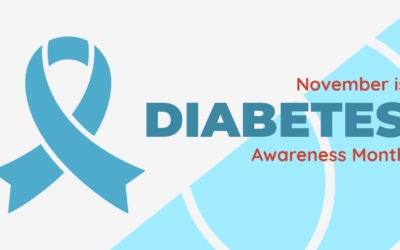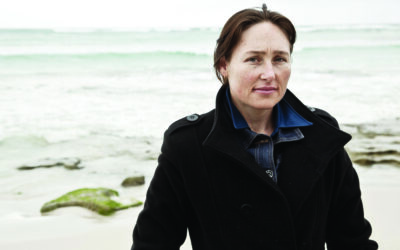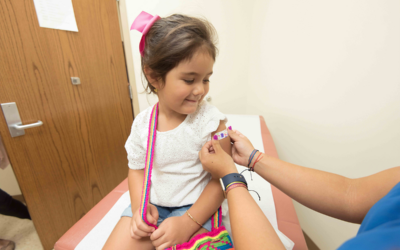As the days grow shorter and colder, many people experience shifts in mood. For some, these changes go beyond a case of the “winter blues” and become a condition called Seasonal Affective Disorder (SAD). SAD is a type of depression that affects millions of Americans each year, often triggered by the changing seasons. At Primary Health Care, we’re here to help you manage your mental health with our behavioral health services.
Why It’s Important
Seasonal Affective Disorder can significantly impact daily life, causing feelings of sadness, fatigue, and difficulty concentrating. While SAD is most common during fall and winter, some people may experience symptoms during spring or summer. Recognizing the symptoms and seeking help early can improve your quality of life and help prevent the condition from worsening.
What to Expect
SAD is a form of depression, and its symptoms include:
- Feeling sad or hopeless.
- Low energy or fatigue.
- Loss of interest in activities you usually enjoy.
- Difficulty sleeping or oversleeping.
- Changes in appetite or weight.
- Trouble concentrating or focusing.
While the exact cause of SAD isn’t fully understood, factors like reduced sunlight, disruptions in your biological clock (circadian rhythm), and imbalances in serotonin and melatonin levels may play a role.
Managing SAD
If you think you might have SAD, there are steps you can take to feel better:
- Light Therapy: Using a special light box can help regulate your mood by mimicking natural sunlight.
- Physical Activity: Regular exercise can boost your mood and energy levels.
- Counseling or Therapy: Cognitive Behavioral Therapy (CBT) is an effective approach for managing SAD.
- Medication: Antidepressants can help some people manage symptoms, especially if started before symptoms begin each season.
 PHC Behavioral Health Services
PHC Behavioral Health Services
At Primary Health Care, we offer behavioral health services to support you through seasonal changes and beyond. Our providers are here to help you create a personalized care plan, whether it includes therapy, medication, or both. We accept Medicaid, private insurance, and offer a sliding fee scale for those without coverage.
Take Control of Your Mental Health
Seasonal Affective Disorder is manageable with the right care and resources. If you’re feeling the effects of SAD, don’t wait to seek help. Visit any Primary Health Care location to learn more about our behavioral health services and take the first step toward feeling better.
Sources:
- Mayo Clinic. (n.d.). Seasonal Affective Disorder (SAD). Retrieved from https://www.mayoclinic.org/diseases-conditions/seasonal-affective-disorder.
- American Psychiatric Association. (n.d.). What Is Seasonal Affective Disorder? Retrieved from https://www.psychiatry.org/patients-families/depression/seasonal-affective-disorder.
- National Institute of Mental Health (NIMH). (n.d.). Seasonal Affective Disorder. Retrieved from https://www.nimh.nih.gov/health/publications/seasonal-affective-disorder.
Related Post
Black History Month Is a Call to Address Persistent Health Disparities
Black History Month is not only a time to celebrate the rich contributions of Black individuals to society, but it is also a critical moment to confront the ongoing challenges that Black communities face—particularly in healthcare. As we honor the past, we must also...
Cervical Cancer Awareness Month
January is Cervical Health Awareness MonthAnyone with a cervix is at risk for cervical cancer. It occurs most often in people over age 30. Long-lasting infection with certain types of human papillomavirus (HPV) is the main cause of cervical cancer. HPV is a common...
National Diabetes Month
National Diabetes Awareness Month, observed throughout November, is an opportunity to shed light on a condition that affects millions of people worldwide. Knowing what the risk factors are, what to look for, and what you can control are important things to know. There...
Tips for Getting a Mammogram
Did you know breast cancer is the most commonly diagnosed cancer among U.S. women? According to breastcancer.org, about 30% of all newly diagnosed cancers in women each year are breast cancer. With October being Breast Cancer Awareness Month, PHC is striving to raise...
Men’s Health: Top 7 Regular Check-Ups You Shouldn’t Ignore
As men, it's essential to prioritize our health and well-being. Regular check-ups are not just for when we're feeling unwell but are crucial for preventive care and early detection of potential health issues. By staying proactive and getting routine screenings, we can...
Better Health Through Better Understanding
April is National Minority Health Month, a time to highlight the importance of improving the health of racial and ethnic minorities and American Indian/Alaska Native (AI/AN) communities. Shedding light on these communities’ gaps, needs, and the systemic barriers they...
Blood Pressure in Diabetes
Maintaining a healthy blood pressure is important for everyone, but it’s especially important for people with diabetes. Learn how to keep your blood pressure and blood sugar under control.
Why get the Flu shot? And answers to other common questions about the flu vaccine
Answers to common flu vaccine questions from pediatric care physician and medical director, Dr. Jason Kessler.





